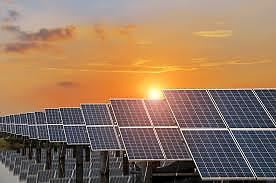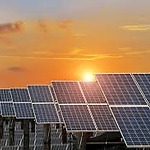During my study at Industrial Design Engineering (IDE) I learned about product innovation, ergonomics, materials, production techniques, market research, customer research, creativity techniques, conceptualization, embodiment, user tests, electronics, even some mechanics and dynamics and much more. Sustainability is, fortunately, becoming more and more integrated in the IDE, however I felt there was much more to learn. During some projects at IDE I got the feeling that by simply replacing the battery by a solar panel I would have created a sustainable product. This was not very satisfying for me and I decided to dive into the world of sustainability.
This semester was actually the first time during my student life I did step out of my IDE comfort zone. Except for a Spanish language course, this is the first time I am following courses at another faculty. Obviously I am following Engineering for Sustainable Development, but also Technology & Global Development at TPM and Renewable Energy Systems of the master Industrial Ecology. What all these three courses have in common is that they made me zoom out and think rather on a system level, something that often is not regarded at IDE. Of course we know a product or a service belongs to some higher system, but it is not always explicitly taken into account during the research, design and development.
This made me think of the solar panel again. If all energy in the world would be created with renewable energy, whether it is solar, wind, geothermal, etc., it would not make sense to also add a solar panel onto the product. Then we can just charge our product from the (green) energy grid. Instead of replacing the battery with a solar panel, we could focus on creating better and more sustainable batteries. Of course at this moment it is not possible to just create solely renewable energy, but if we keep innovating and stay positive, we hopefully will have this in the future.
Looking at the end of life of the product there is also much to gain if the solar panel is not integrated in the product. A solar panel contains many valuable materials. The consumer product with solar panel could end up in the residual waste. Therefore product-service-systems should be created to return the products to the producer in order to recycle the product, this is already happening within some businesses and is key within the circular economy. In my opinion this is already a great transition towards a sustainable (or circular) world. However, there is still a big chance that the product-with-solar-panel ends up in the bin or lies unused in a storage box. In that case the valuable materials from the solar panel can never be reused again. In the case of energy production on a solar plant, all valuable materials stay concentrated in one place and can be much more easily reused and maintained.
The lesson learned for me is that by trying to solve a problem or to make a product sustainable, it is highly relevant to include the system level. As with the example of the solar panel, this it could be added to the product, however it would be much more effective to make use of a green energy grid to charge the product. However this is often behind the scope of the designer and thus we will choose for a solar panel, because we cannot simply make the energy grid greener. Thus when looking for the right solutions, it is important to determine what lies behind the problem, what is the bigger picture. Efficiency is very important, but effectiveness might be even more important. Together we need to focus on the most urgent problems, the product-with-solar-panel should be just an ‘emergency solution’ until the green energy grid exists, but meanwhile we should be careful not to lose too many valuable materials by putting them in products that will be thrown away anyway.


